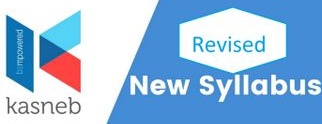1. Strategic management accounting information
• Sources of strategic management accounting information
• Role of strategic management accounting in strategic planning and control
• Governance and control of strategic management accounting information
• Scope and limitations of management accounting
• Ethical standards for management accountants
2. Cost estimation and interpretation
• Ordinary least square (OLS) method. Single and multiple predictors; tests of significance (goodness of fit, ANOVA/P-Value, economic plausibility tests, significance of independent variable/t-test)
• Specifications/assumptions of OLS (implications of serial correlation, multi- colinearity)
• Computer output and technical versus managerial interpretation of OLS results
• Learning curve models and their application
3. Planning and decision making techniques
• Cost volume profit analysis (CVP) for single and multiple products under conditions of uncertainty
• Decision making under environments of uncertainty and risk, using conditional payoff tables and decision trees.
• Expected value of perfect information
• Relevant cost analysis
• Application of marginal costing (Non-routine decisions): Limiting factor analysis,
• Throughput accounting, make or buy decision, continue or discontinue/drop decisions, special order decisions and other short term decisions.
4. Pricing decisions
• External pricing methods
• Transfer pricing in divisionalised companies: Domestic and international transfer pricing
• Product life cycle costing, Target costing and Kaizen costing
5. Strategic performance measurement
• Functional and divisionalised organisational structures
• Responsibility accounting, responsibility centers and segmental reporting
• Divisional performance measures such as profit margin, asset turnover, return on investment(ROI), return on capital employed(ROCE), residual income(RI), accounting rate of return(ARR) and economic value added(EVA)
• Non-financial performance indicators
• Alternative performance measures such as balanced scorecard, performance pyramid, Fitzgerald and Moon’s building block model.
6. Inventory control decisions
• Applications of certainty inventory models (EOQ and EBQ) in decision making
• Stochastic inventory models with and without stock out cost
• Marginal analysis for perishable stock items
• Application of simulation models in inventory control (with and without backorders)
• Application of strategic management decisions in inventory control: Just-in-time purchasing (JIT), ABC analysis and material requirement planning (MRP)
7. Budgetary control techniques
• Applications of budgetary control systems: Top-down, bottom-up, rolling, zero- based(ZBB), activity-based (ABB), incremental, feedback and feed-forward controls.
• Use of operational variances in reconciling original budget with actual performance
• Advanced variance analysis, planning and operational analysis (Ex-post)
• Application of learning curve model and ABC in variance analysis
• Investigation models for variances.
8. Environmental management accounting
• Role of accountants in managing and accounting for environmental cost
• Use of management accounting techniques in identification and allocation of environmental costs (Inflow/Outflow analysis, Flow cost accounting, Environmental lifecycle costing and Environmental Activity Based Costing).
